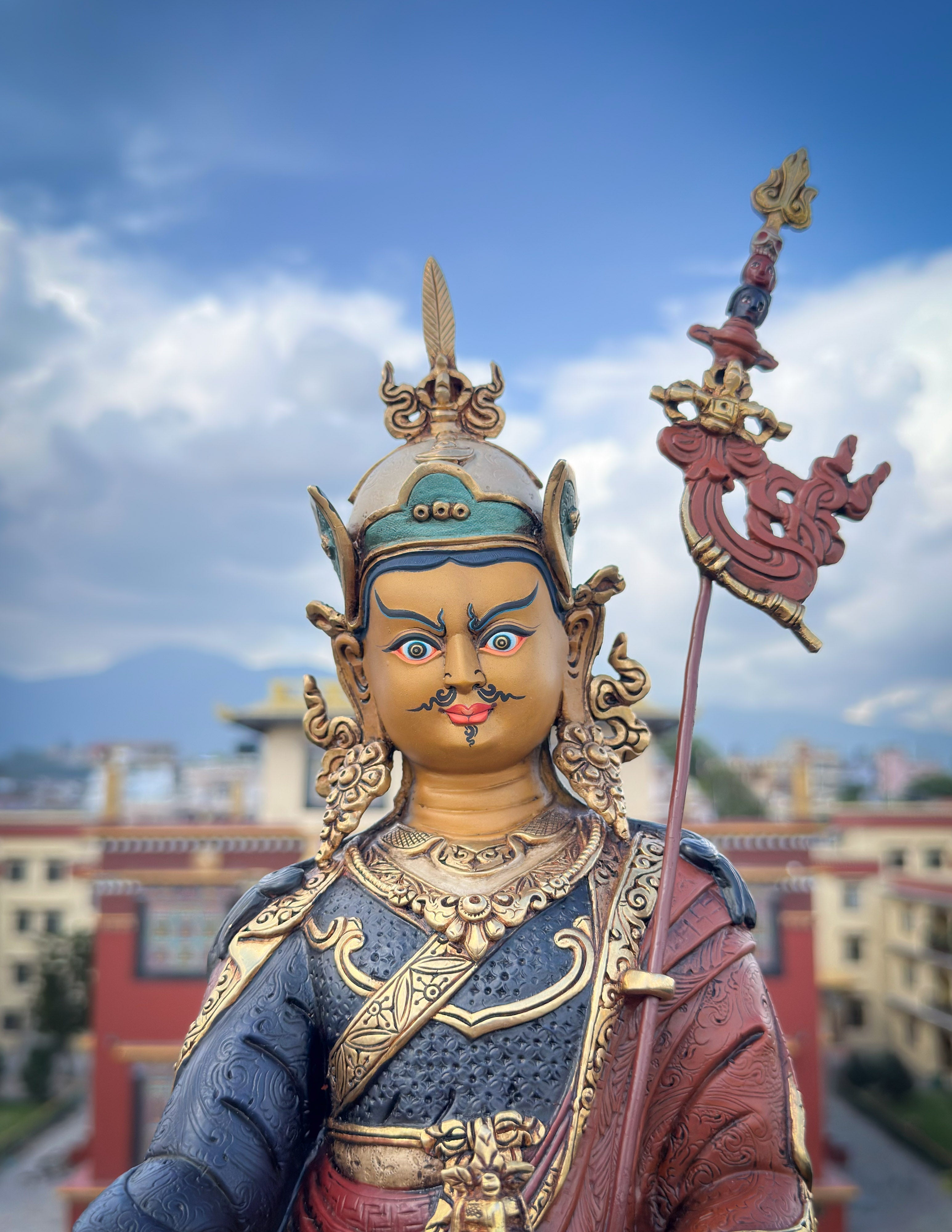What is Vajrayana Buddhism? A Beginner’s Guide to the Diamond Path
Imagine a spiritual path so powerful and precise, it’s called the “Diamond Vehicle.” Vajrayana Buddhism is a path that is mystical, symbolic, and designed to awaken your inner Buddha in this very lifetime.
If you've ever felt drawn to Tibetan deities, ritual objects, or mantras, you're likely brushing up against Vajrayana Buddhism, which is one of the most fascinating and advanced forms of spiritual practice.
In this guide, we’ll walk you through what Vajrayana is, where it came from, how it's different from other types of Buddhism, and how you can begin connecting with it, whether you're a practitioner or a sacred art enthusiast.
What Does “Vajrayana” Mean?
“Vajra” means diamond or thunderbolt, symbolizing indestructible clarity and power. “Yana” means path. Together, Vajrayana is the Diamond Path—a swift, transformative method to reach enlightenment.
This path is rich in mantras, deity visualizations, rituals, and sacred symbols. Unlike more gradual paths like Theravāda, Vajrayana teaches that we can realize our innate Buddha-nature within this very life, through skillful, often esoteric, means.
Where Did Vajrayana Buddhism Come From?
Vajrayana emerged around the 6th–7th century CE in India as an extension of Mahayana Buddhism, and later spread to Tibet, Nepal, Bhutan, Mongolia, Parts of China, and Russia. It blends traditional Buddhist philosophy with Tantric practices, emphasizing visualization, devotion, and sacred ritual. This tradition flourished especially in Tibet, where it became the core of spiritual life and art.
How is Vajrayana Different from Other Buddhism?
|
Tradition |
Key Focus |
Tools & Approach |
|
Theravāda |
Mindfulness & renunciation |
Monastic life, Vipassana meditation |
|
Mahāyāna |
Compassion & Bodhisattva path |
Philosophy, sutras, altruism |
|
Vajrayāna |
Swift awakening through tantra |
Mantras, mudras, deities, ritual tools |
Unlike the slower methods of Theravāda or Mahāyāna, Vajrayana embraces all aspects of life, even desire and emotion as fuel for awakening, when skillfully transformed.
What Are the Main Practices of Vajrayana?
-
Deity Yoga:
Practitioners visualize themselves as enlightened deities like Tara, Manjushri, or Vajrasattva, embodying their wisdom and qualities. -
Mantra Recitation:
Sacred sounds such as Om Mani Padme Hum or Om Vajrasattva Hum are chanted to purify, protect, and empower the mind. -
Rituals and Offerings:
Rituals involve mudras (hand gestures), vajra & bell, incense, and visual offerings to invoke divine energies. -
Guru Devotion:
A deep relationship with the spiritual teacher (Lama) is essential for receiving empowerment and guidance. -
Visualization:
Through focused imagery, practitioners mentally construct mandalas or deity forms to transform ordinary perception into sacred awareness.
These are not just symbolic; they are inner technologies of awakening.
Can Anyone Practice Vajrayana?
While some advanced practices require empowerments (initiations) from a qualified teacher, anyone can start exploring Vajrayana through:
-
Mantra chanting
-
Making offerings (flowers, candles, incense)
-
Meditating on a deity image
-
Studying teachings from authentic lineage masters
Even purchasing a consecrated deity statue for your altar can become a sacred entry point into the Vajrayana path.
Common Vajrayana Deities to Begin With
|
Deity |
Represents |
Beginner Practice |
|
Green Tara |
Compassion in action |
Om Tare Tuttare Ture Soha |
|
Vajrasattva |
Purification of karma |
Om Vajrasattva Hum |
|
Avalokiteshvara |
Infinite compassion |
Om Mani Padme Hum |
|
Padmasambhava |
Guru energy, protection |
Om Ah Hum Vajra Guru Padma Siddhi Hum |
Sacred Art in Vajrayana: More Than Decoration
In Vajrayana, statues and thangkas are not just beautiful, but they are living presences of the deity.
Many practitioners keep these sacred items on their altars and use them as focus points for visualization and offerings.
At Nidhiratna, we offer traditionally handcrafted, fully gold-gilded Vajrayana deity statues, and upon request, we perform consecration ceremonies where mantras, relics, and sacred substances are sealed inside and blessed by Lamas.
This process activates the statue as a spiritual support for your practice.
🔗 Learn how we consecrate statues at Nidhiratna
Final Thought
Whether you're inspired by the rich symbolism, the profound teachings, or the sacred presence of Vajrayana deities, this tradition offers a meaningful path to inner awakening—one that is both powerful and deeply personal.
And the best part is: you don’t need to travel far or undergo elaborate rituals to begin.
You can gently take your first steps right at home.
Starting can be as simple as lighting a candle, softly chanting a mantra, or spending a quiet moment in front of a statue that speaks to your heart. These small acts of devotion, when done with sincerity, can open the door to a lifelong spiritual journey.

















Share:
What is Vesak Day? Buddha's Sacred Holiday (2025)
Top 5 Vajrayana Buddhist Deities and Their Meanings